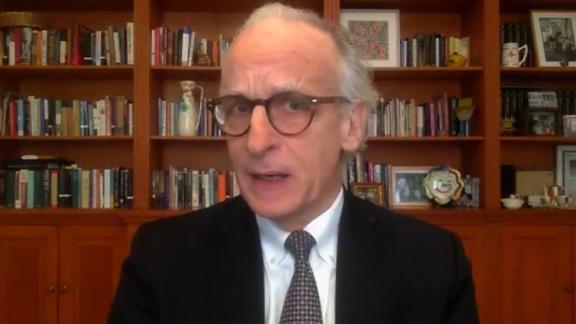The risk to Native American nations from Covid-19

The Indian Health Service, founded 65 years ago and criticized ever since, has encountered yet another major challenge: Covid-19 — or as the Navajo call it Dikos Ntsaaígíí.
Recent reports from the Navajo Nation, which straddles Arizona, Utah and New Mexico, have shown a sudden rise in cases, from about 10 people diagnosed two weeks ago to 216 on April 1, including 40 cases added in a single day. The latest tally from the Navajo Department of Health is 354, though the exact number of cases is difficult to determine because of different lines of reporting to state and Navajo health departments.
Thus far, 14 deaths have been reported from Covid-19. But more fatalities are likely: the American Indian population has high rates of health problems, like diabetes and heart disease, which are strongly associated with a higher risk of Covid-19 death.
Unfortunately, the Navajo Nation experience, thus far, resembles the United States experience throughout the pandemic, one of inadequate testing, short supplies, and insufficient health care capacity.
And the fact that this particular outbreak is occurring in a population already at high risk for poor outcomes, with services distributed across a very wide geographic area, chronic staffing shortages, and a need to compete with larger, more wealthy states and cities for desperately needed supplies and equipment likely will result in many lost lives.
To understand the situation better, it helps to know about the Indian Health Service:
The Indian Health Service is an agency within the federal Department of Health and Human Services that serves 2.6 million people who are members of the 573 federally recognized American Indian and Alaska Native tribes. The 2019 appropriation for the Indian Health Service was $5.8 billion. The recent $2 trillion CARES Act includes $1 billion for the Indian Health Service.
Care in the Indian Health Service is provided by 15,000 employees, including 776 doctors and 2,380 nurses across 46 designated hospitals. In addition to the hospitals, there are hundreds of outpatient health care centers within the program.
For reporting infectious disease and other trends, the Indian Health Service is organized into 12 areas, including one devoted solely to the Navajo region and its 244,000 citizens, who are spread across 25,000 square miles. The Navajo Area Indian Health Service provides care not just to members of the Navajo Nation and San Juan Southern Paitue Tribe, but also Hopis, Zunis and other tribes in the area. All told, the area has 222 hospital beds to serve 244,000 people.
Cases of Covid-19 in the Navajo Nation are reported both to state departments of health — for example, in Arizona and Utah — as well as to the Navajo Department of Health. It is the Navajo agency that has provided the most recent breakdown of which counties across Arizona, Utah and New Mexico are diagnosing the most cases — for now it is Navajo County (149 cases) and Coconino (94 cases) County, each in Arizona.
Information about Covid-19 testing numbers within the Indian Health Service is posted regularly. On April 5, the 12 Tribal Epidemiologic Centers reported sending 6,993 Covid-19 tests. The highest positive rate by far was from the Navajo Nation with 268 positive tests out of nearly 2,257 tests taken. Of the remaining approximately 4,700 tests across the other 11 Tribal Epidemiologic Centers, only 206 were positive, demonstrating how specific to the Navajo Nation the outbreak is.
Importantly, Covid-19 test results are still pending on 2,273 tests, echoing an unacceptable problem experienced across the country: a delay, sometimes of up to a week, in receiving results from tested patients. This slow turnaround has consistently interfered with patient care and staff safety since the Covid-19 outbreak began.
Following the pattern seen in almost every other area of the country and the world, the outbreak in the Navajo Nation began with recognition of a few cases, leading to more testing — which in turn led to a lot more cases, and hence more testing, more cases, and then a series of potentially lethal shortages, from test kits, to protection for health care workers, to ventilators. Then comes the crushing sense of being overwhelmed and fearful.
Once again, we are witnessing how ruthless Covid-19 is, as it exposes the many weaknesses in the US health care system. Each of these weaknesses will result in unnecessary death and sorrow for countless people once so proud of the remarkable and often miraculous American system of preventing, diagnosing and treating human illness.
